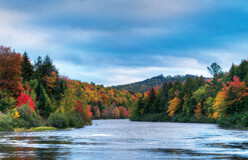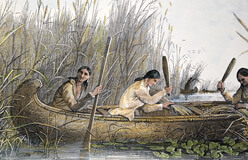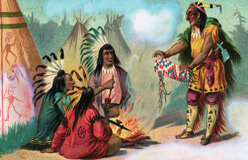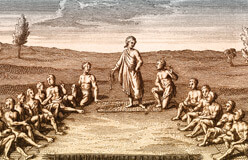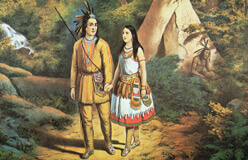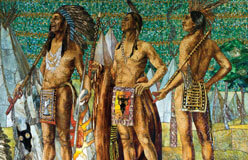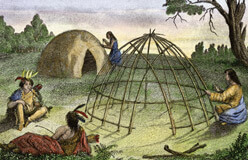Along the Atlantic coast, from Canada to the Carolinas, the ocean was rich with fish and shellfish. Many nations who spoke related languages lived in clusters of coastal villages.
Each had its own language, but all the languages had common elements. That’s how people from the Algonquian nations could communicate with one another. Other Algonquian speakers lived inland. They ranged from the Ohio River valley as far as the western Great Lakes. The Algonquians had many things in common. They also had many differences, based on the variety of places they called home.
